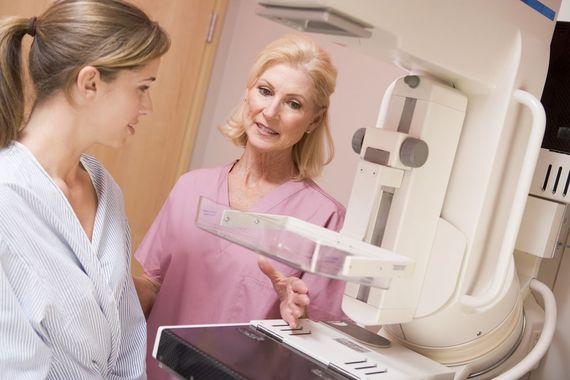 Breast cancer is the most common cancer in women. The best way to fight breast cancer is early detection, whether that is self-examinations or regular mammograms. If you're worried that your breast pain or tenderness could be something serious, make an appointment with your doctor today.
Breast cancer is the most common cancer in women. The best way to fight breast cancer is early detection, whether that is self-examinations or regular mammograms. If you're worried that your breast pain or tenderness could be something serious, make an appointment with your doctor today.
We often associate pain with something wrong, so when women feel tenderness or pain in their breast they often assume the worst — breast cancer. However, breast pain is rarely the first noticeable symptom of breast cancer. Several other factors can cause the pain (menstrual hormone changes, the pill, ill-fitting bras….)
A lump in the breast isn't always cancerous. More than 80% of all breast lumps are non-cancerous for women under the age of 40, but any lump you do find must be checked out by your doctor.
It is important to recognise other symptoms that can indicate underlying breast cancer. These include:
- Nipple discharge or retraction of the nipple
- Enlargement of one breast
- Dimpling of the breast surface
- An "orange peel" texture to the skin
- Unintentional weight loss
- Enlarged lymph nodes in the armpit
- Newly visible veins on the breast
As with any cancer, early detection and treatment is a major factor in determining the outcome. Breast cancer is easily treated and usually curable when detected in the earliest of stages.
The best way to ensure you detect early breast cancer is by checking your own breasts monthly, and all adult women should do this, no matter what age. Here is a summary of how to do a breast self-exam.
Step 1- In the shower
Using the pads of your fingers, move around your entire breast in a circular pattern moving from the outside to the centre, checking the entire breast and armpit area. Check both breasts each month feeling for any lump, thickening, or hardened knot. Notice any changes and get lumps evaluated by your healthcare provider.
Step 2- In front of a mirror.
Visually inspect your breasts with your arms at your sides. Next, raise your arms high overhead. Look for any changes in the contour, any swelling, or dimpling of the skin, or changes in the nipples. Next, rest your palms on your hips and press firmly to flex your chest muscles. Left and right breasts will not exactly match—few women's breasts do, so look for any dimpling, puckering, or changes, particularly on one side.
Step 3- Lying down
When lying down, the breast tissue spreads out evenly along the chest wall. Place a pillow under your right shoulder and your right arm behind your head. Using your left hand, move the pads of your fingers around your right breast gently in small circular motions covering the entire breast area and armpit. Use light, medium, and firm pressure. Squeeze the nipple; check for discharge and lumps. Repeat these steps for your left breast.
BreastCheck is a Government-funded programme providing breast screening and invites women aged 50 to 64 for a free mammogram on an area-by-area basis every two years. The aim of BreastCheck is to reduce deaths from breast cancer by finding and treating the disease at an early stage and all women who receive an invitation to attend their appointment. They will also see women under 50 years who are thought to have an increased risk of breast cancer through family history or other factors. Breastcheck consider a family history as more than one first degree relative with breast cancer. Private screening mammograms can also be organised through GP’s for women from the age of forty if they are worried.






